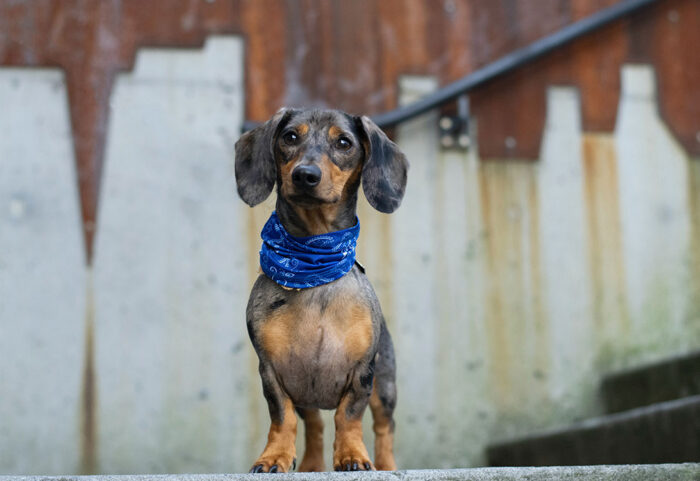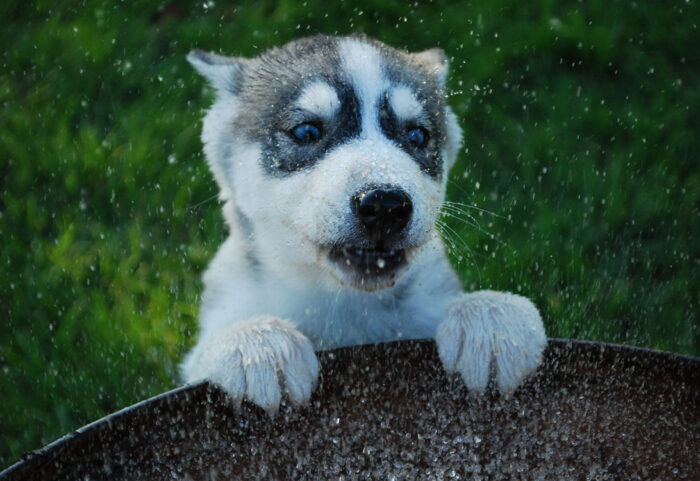Which Bones are Safe for Dogs?
Dogs and bones are a classic combo. But after years of trial and error, we now know that bones aren’t always safe for dogs. In fact, some bones can be fatal to our furry friends. On the other hand, some bones can give your pup wonderful health benefits!
Dig in to our complete guide to the safest bones for your dog.
What Bones Are OK for Your Dog?
The wrong bones can shatter and splinter in your dog’s mouth, posing serious health threats. Bones are extremely sharp when broken and will slice through your pup’s mouth easily. And if your dog manages to swallow any remanence of the bone, the shard can damage internal organs and gastrointestinal processes.
Luckily, you can prevent injury by knowing which type of bone is best for your dog.

Raw Bones
Raw bones are much safer than cooked bones. These bones can be classified into two types: recreational and nutritional. Both types should be boiled before giving them to your pup to eliminate salmonella and other food poisoning concerns.
Recreational raw bones are meant for play. These are the ones you see at pet stores in large bins. Recreational bone toys usually come from cows or sheep because they are strong and extremely hard to shatter. It’s still imperative to monitor the condition of the bone you give your dog to make sure no parts are chipping off.
Nutritional dog bones, on the other hand, are to be mixed into a pup’s diet. These bones are small and brittle so they can be ground up into a fine dust. Once ground, adding them to a dog’s meal is a great way to supplement calcium and phosphorus intake.
You’ll usually find nutritional dog bones that come from chicken. It’s recommended to grind your dog’s bones in a meat grinder to avoid any oversized pieces. if you are going to feed them a bone whole, please follow the guide below:
Safe Raw Bones
- Cow
- Lamb
- Beef
Unsafe Raw Bones
- Chicken
- Turkey
- Pork

Cooked Bones
Cooked bones are always off-limits to dogs. No matter how large a bone is, it will become brittle after cooking. Never feed your dog cooked bones — whether you cook them or find them in a pet store.
In addition to being a choking hazard, cooked bones are rarely prepared with dogs in mind. Stews and BBQs include spices that can be harmful to your furry friend. This can upset their stomach and even lead to life-threatening sickness.

Rawhide
Rawhides are the most popular type of bone for dogs — but extreme supervision is required.
Rawhide is meant to be chewed on for 1-2 weeks. After a while, it will become weak and break apart into chewy snacks for your dog. When your dog is playing with rawhide it’s essential to be there with them the entire time.
If your dog has a particularly strong bite (usually associated with rottweilers, dobermans, german shepards, etc.) rawhide can be even more dangerous. It can turn into a choking hazard if your dog breaks the bone before it’s chewy.
Think of rawhide like a sucker with chocolate in the middle. If you lick it long enough, you can easily get to the chocolate in the middle. But, if you bite too hard and it shatters, you can choke and hurt your teeth.

What Kinds of Problems Can Dog Bones Cause?
In past years, there have been reports of dogs getting sick from bones purchased in pet stores. These bones were all commercially available and had seasoning and preservative content present.
While the FDA has investigated further since the last report in 2017, it’s best to check with your veterinarian before purchasing a dog bone for play. They will have a good grasp of current industry standards and know what products to avoid.
Signs Your Dog Ate a Bad Bone
There are a few telltale signs indicating your dog ingested a bad bone. All of these symptoms are usually caused by stress in the gastrointestinal tract.
Symptoms of mal-bone ingestion include:
- Diarrhea
- Vomiting
- Cuts in the mouth
- Bloody stools
- Bleeding of the rectum

If any of these symptoms are present, call a vet and mention that your dog was recently chewing on a bone.
Avoid bones all-together if your pup has a history of stomach problems, as these can be heightened with a bad bone.
What to Do If My Dog Gets a Bad Bone
If you catch your dog eating a bone from human food, stay calm. Getting worked up will put unnecessary stress on your dog and could lead to further implications.
Try to take the bone away from your pup if there is any left. Especially with toys and food like this, they may be reluctant and attempt to eat it all at once. If this happens, take a deep breath and call your vet.
Pending their instructions, monitor your dog for 72 hours. Check their stool for pieces of the bone and if none are present, take your dog to the vet to be sure no bits are stuck in their gastrointestinal tract.

General Safety Guidelines for Dog Bones
When in doubt about a bone toy for your dog, ask a vet. As mentioned, they will have the most up-to-date information on what the safest options are and point you in the right direction.
It’s also important to note — sometimes it’s ok to buy fake. Fake bones provide just as much fun and exercise as real bone, without the worries associated with them. These bones will usually be made of plastic and will have information on their tags.
With both and real fake bones, choking should be your main concern. Ensure you purchase a toy for your dog that is relative to their size.
A good rule of thumb is to always give your dog a bone longer than their muzzle. A beef shank is a great option for large dog breeds.
Remember, never leave your dog alone while they are playing with a bone. Let them play for 10-20 minutes, then put it away until the next play session — too much wear and tear all at once can break the bone down quickly as it gets saturated in saliva.
Lastly, toss a used bone in the trash after about two weeks. Sometimes you’ll have to do this sooner if it’s starting to look well-played with. This helps to prevent shattering.

Benefits of Bones for Dogs
So, where are bones’ place in today’s dog world?
Generally, supplements can give your dog the same nutritional benefit that bones give them. Nowadays, many pet food manufacturers produce treats that are specifically made to boost calcium and phosphorus levels.
Bones are a good way to keep your dog busy. However, dog puzzles and other fun toys are hitting the market that not only keep your pup busy but also allow you to hide a treat inside of them for your dog to dig out.
There will always be a place in culture for a dog and its bone. But, in reality, there are safer options out there. As always, consult your vet before getting a real bone for your four-legged best friend.
While being proactive about your dog’s health, Gallant can also help. Regenerative stem cell banking can help treat sickness and injury — whether from a bone or not — and may be able to save your furry best friend’s life down the road.


